Where did the day go ?
All we did was visit Tyne Cot Cemetery
It's the war cemetery biggest in the world, WW1
It doesn’t look very big but here are a lot of graves here, many with no names on (known unto God)
It is a sad place to walk around reading the names or just seeing a soldier only know to god there are too many of them, they gave their life, but we don't know who they are
There are graves from all over the commonwealth, and a lot of Kiwi’s and Aussies, Canadians, all with the same motif
There are a couple of walls with names on three of those that died and are buried in mass graves
There are 11,956, of which 8,369 are unnamed, graves
There is a lump of concrete, it don’t look much but that was a major pillbox, it wasn’t just used for firing, it was also an aid station
I found out this about Tyne Cot and how it got its name
The name "Tyne Cot" is said to come from the Northumberland Fusiliers seeing a resemblance between the many German concrete pill boxes on this site and typical Tyneside workers' cottages (Tyne cots)
Tyne Cot CWGC Cemetery lies on a broad rise in the landscape which overlooks the surrounding countryside
. As such, the location was strategically important to both sides fighting in the area. The concrete shelters which still stand in various parts of the cemetery were part of a fortified position of the German Flandern I Stellung which played an important role in the area during the Battle of Passchendaele in 1917.
On 4 October 1917, the area where Tyne Cot CWGC Cemetery is now located was captured by the 3rd Australian Division and the New Zealand Division and two days later a cemetery for British and Canadian war dead was begun. The cemetery was recaptured by German forces on 13 April 1918 and was finally liberated by Belgian forces on 28 September.
After the Armistice in November 1918, the cemetery was greatly enlarged from its original 343 graves by concentrating graves from the battlefields, smaller cemeteries nearby and from Langemark
The cemetery grounds were assigned to the United Kingdom in perpetuity by King Albert I of Belgium in recognition of the sacrifices made by the British Empire in the defence and liberation of Belgium during the war
.
The Cross of Sacrifice that marks many CWGC cemeteries was built on top of a German pill box in the centre of the cemetery, purportedly at the suggestion of who visited the cemetery in 1922 as it neared completion
]The King's visit, described in the poem The Kings Pilgrimage included a speech in which he said:
We can truly say that the whole circuit of the Earth is girdled with the graves of our dead. In the course of my pilgrimage, I have many times asked myself whether there can be more potent advocates of peace upon Earth through the years to come, than this massed multitude of silent witnesses to the desolation of war.
— King George V, 11 May 1921
The cemetery was designed by Sir Herbert Baker The land on which the cemetery stands is the free gift in perpetuity of the Belgian people to those who are honoured here
...................................................................................................................................
The UK missing lost in the Ypres Salient are commemorated at the Menin Gate and the Tyne Cot Memorial
. Upon completion of the Menin Gate memorial to the missing in Ypres builders discovered it was not large enough to contain all the names as originally planned.
They selected an arbitrary cut-off date of 15 August 1917 and the names of the UK missing after this date were inscribed on the Tyne Cot memorial instead.
Additionally, the New Zealand contingent of the Commonwealth War Graves Commission declined to have its missing soldiers names listed on the main memorials, choosing instead to have names listed near the appropriate battles. Tyne Cot was chosen as one of these locations]
Unlike the other New Zealand memorials to its missing, the Tyne Cot New Zealand memorial to the missing is integrated within the larger Tyne Cot memorial, forming a central apse in the main memorial wall. The inscription reads: "Here are recorded the names of officers and men of New Zealand who fell in the Battle of Broodseinde and the First Battle of Passchendaele October 1917 and whose graves are known only unto God"
.
The memorial contains the names of 33,783 soldiers of the UK forces, plus a further 1,176 New Zealanders.
Three British Army Victoria Cross recipients are commemorated here
Lieutenant Colonel Philip Bent (1891–1917)
Corporal William Clamp (1891–1917)
Lance Corporal Ernest Seaman (1893–1918)
Tyne Cot
Sunday, April 09, 2017
 Brugge, West Flanders, Belgium
Brugge, West Flanders, Belgium
Other Entries
-
1Here we go
Apr 081 day prior Greenwich, United Kingdomphoto_camera0videocam 0comment 4
Greenwich, United Kingdomphoto_camera0videocam 0comment 4 -
2Meeting up with the rest of the group
Apr 09earlier that day Greenwich, United Kingdomphoto_camera1videocam 0comment 6
Greenwich, United Kingdomphoto_camera1videocam 0comment 6 -
3Tyne Cot
Apr 09 Brugge, Belgiumphoto_camera30videocam 2comment 4
Brugge, Belgiumphoto_camera30videocam 2comment 4 -
4Luxemburg
Apr 101 day later Luxembourg, Luxembourgphoto_camera20videocam 0comment 5
Luxembourg, Luxembourgphoto_camera20videocam 0comment 5 -
5Schloss Heidelberg
Apr 101 day later Heidelberg, Germanyphoto_camera52videocam 0comment 6
Heidelberg, Germanyphoto_camera52videocam 0comment 6 -
6Regensburg
Apr 112 days later Regensburg, Germanyphoto_camera28videocam 0comment 2
Regensburg, Germanyphoto_camera28videocam 0comment 2 -
7The sun never shines in Prague
Apr 123 days later Prague, Czech Republicphoto_camera41videocam 1comment 3
Prague, Czech Republicphoto_camera41videocam 1comment 3 -
8Rain, rain, and still more rain
Apr 134 days later Budapest, Hungaryphoto_camera33videocam 0comment 8
Budapest, Hungaryphoto_camera33videocam 0comment 8 -
9Budapest Day 2
Apr 145 days later Budapest, Hungaryphoto_camera76videocam 0comment 3
Budapest, Hungaryphoto_camera76videocam 0comment 3 -
10Transylvania
Apr 156 days later Cluj-Napoca, Romaniaphoto_camera31videocam 0comment 4
Cluj-Napoca, Romaniaphoto_camera31videocam 0comment 4 -
11Salina Turda (a salt mine)
Apr 167 days later Brasov, Romaniaphoto_camera35videocam 0comment 1
Brasov, Romaniaphoto_camera35videocam 0comment 1 -
12Bram Castle and Brasov
Apr 178 days later Brasov, Romaniaphoto_camera66videocam 1comment 8
Brasov, Romaniaphoto_camera66videocam 1comment 8 -
13Zarnesti bear sanctuary
Apr 189 days later Zarnesti, Romaniaphoto_camera28videocam 0comment 12
Zarnesti, Romaniaphoto_camera28videocam 0comment 12 -
14Palace of the Parliament
Apr 2011 days later Bucharest, Romaniaphoto_camera55videocam 2comment 2
Bucharest, Romaniaphoto_camera55videocam 2comment 2 -
15Jeez, its freezing here
Apr 2112 days later Istanbul, Turkeyphoto_camera57videocam 0comment 1
Istanbul, Turkeyphoto_camera57videocam 0comment 1 -
16In search of a sleeping bag
Apr 2213 days later Istanbul, Turkeyphoto_camera13videocam 1comment 8
Istanbul, Turkeyphoto_camera13videocam 1comment 8 -
17One trip ends, another trip starts
Apr 2415 days later Istanbul, Turkeyphoto_camera4videocam 0comment 6
Istanbul, Turkeyphoto_camera4videocam 0comment 6 -
18Gallipoli, ANZAC Day
Apr 2516 days later Gallipoli, Turkeyphoto_camera40videocam 0comment 4
Gallipoli, Turkeyphoto_camera40videocam 0comment 4 -
19The War Graves
Apr 2617 days later Gallipoli, Turkeyphoto_camera67videocam 2comment 5
Gallipoli, Turkeyphoto_camera67videocam 2comment 5 -
20Out of Europe, into Asia
Apr 2819 days later Ephesus, Turkeyphoto_camera13videocam 0comment 1
Ephesus, Turkeyphoto_camera13videocam 0comment 1 -
21A Greek village (are you sure ?)
Apr 2819 days later Torbali, Turkeyphoto_camera19videocam 0comment 2
Torbali, Turkeyphoto_camera19videocam 0comment 2
Comments
2025-05-22
Comment code: Ask author if the code is blank

 Brugge, West Flanders, Belgium
Brugge, West Flanders, Belgium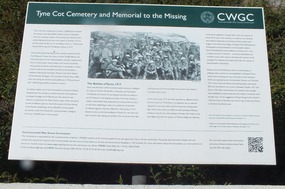
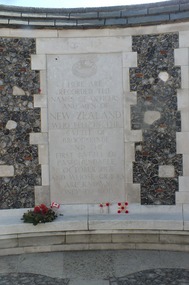
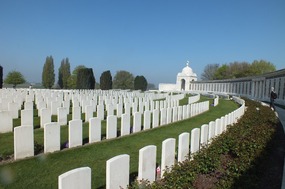
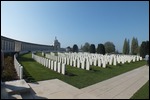








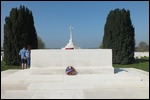
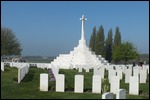

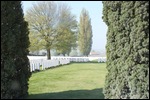
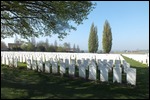
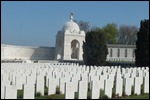
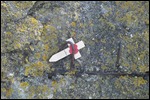
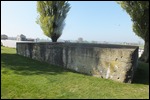
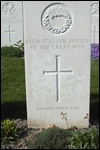
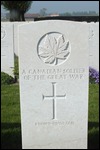
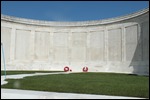
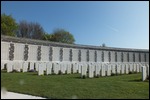


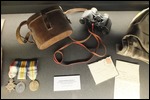
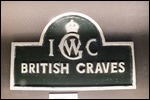

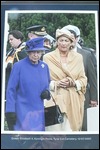
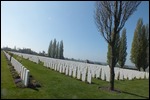
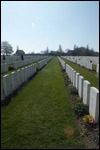

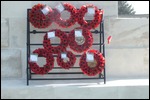
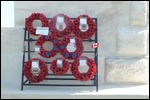
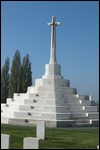
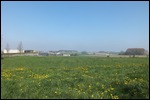
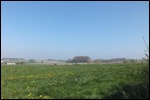
Peggy
2017-04-10
Bruges is a great place to visit.
Sheila
2017-04-10
Looking forward to another adventure through your blogs, Derrick. My grandfather was at Vimy and Canadians are honoring that battle today. Grandpa was in the medical corps as a stretcher bearer. I am grateful that he came home safely when so many did not.
mmbcross
2017-04-10
How senseless is war! In today's technological wars, it's the civilians that suffer, not so much the military.
jim.hooley
2017-04-10
The sad thing of any confrontation is that too many lose their lives for trying to keep the world in a free environment. Power, religion, and money .......
A nice write up, Del - very informative.